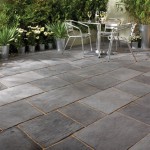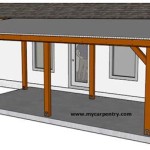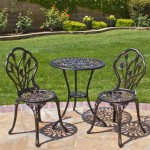How to Design a Small Patio Garden
Designing a small patio garden presents a unique opportunity to maximize limited space and create a functional, aesthetically pleasing outdoor area. Effective planning is crucial to ensure the garden meets individual needs, style preferences, and environmental conditions. A well-designed patio garden can serve as a tranquil retreat, an outdoor dining space, or a vibrant extension of the interior living area.
The design process should begin with a thorough assessment of the patio’s dimensions, sun exposure, prevailing wind patterns, and existing architectural features. This initial analysis will inform subsequent decisions regarding plant selection, furniture placement, and the overall layout of the garden. It is also important to consider the intended use of the patio. Will it primarily serve as a relaxation space, a dining area, or a space for entertaining? The answers to these questions will guide the design process and ensure that the final product aligns with the user's needs.
Before commencing the physical design, it's advantageous to sketch out several different potential layouts. This allows for the exploration of various spatial arrangements and helps visualize how the different elements of the garden will interact. Consideration should be given to creating a sense of flow and movement within the small space. Avoid overcrowding the patio with too many features; simplicity is often key to achieving a harmonious and functional design.
Maximizing Vertical Space
In a small patio garden, utilizing vertical space is essential to maximize planting opportunities and create visual interest. Vertical gardening techniques allow for the cultivation of plants without consuming valuable floor space. This can be achieved through a variety of methods, including the use of wall-mounted planters, hanging baskets, and trellises.
Wall-mounted planters are an excellent option for adding greenery to bare walls or fences. They come in a wide range of materials, styles, and sizes, allowing for customization to fit the aesthetic of the patio. Trailing plants such as ivy or succulents are well-suited for wall-mounted planters, as they cascade downwards, creating a visually appealing effect. Choosing planters that complement the existing architecture of the house can help to create a cohesive and integrated design.
Hanging baskets offer another versatile solution for vertical gardening. They can be suspended from eaves, pergola beams, or specially designed plant hangers. Hanging baskets are particularly well-suited for displaying colorful flowering plants, such as petunias, geraniums, or fuchsias. By selecting a variety of plants with different textures and colors, it is possible to create a dynamic and visually engaging display. Proper watering is essential for hanging baskets, as they tend to dry out more quickly than plants in the ground. Consider incorporating self-watering systems to simplify maintenance.
Trellises provide support for climbing plants, such as roses, clematis, or jasmine. They can be attached to walls or fences, creating a green backdrop that adds privacy and visual interest to the patio. Trellises are available in a range of materials, including wood, metal, and plastic. The choice of material should depend on the desired aesthetic and the weight of the plants that will be supported. Climbing plants can also be used to soften harsh architectural lines and create a more natural and inviting atmosphere.
Furthermore, consider tiered planters or plant stands. These allow for multiple layers of plants within a small footprint. Place taller plants at the back and shorter ones in the front to create depth and visual hierarchy. This also ensures that all plants receive adequate sunlight.
Strategic Plant Selection
Selecting the appropriate plants for a small patio garden is critical to its success. Factors such as sun exposure, soil conditions, and the desired aesthetic should all be considered when making plant choices. It is also important to select plants that are well-suited to the local climate and require minimal maintenance.
For patios with limited sunlight, shade-tolerant plants such as hostas, ferns, and impatiens are ideal. These plants thrive in low-light conditions and can add lush greenery to the patio. Consider incorporating variegated varieties to add visual interest and brighten up shaded areas. In sunny patios, drought-tolerant plants such as succulents, lavender, and rosemary are excellent choices. These plants require minimal watering and can withstand high temperatures. They also offer the added benefit of attracting pollinators to the garden.
When selecting plants, consider their mature size. Avoid planting species that will eventually outgrow the space. Instead, opt for compact varieties or plants that can be easily pruned to maintain their desired size. Dwarf shrubs, miniature roses, and compact perennials are all good choices for small patio gardens. Herbs are also an excellent option, as they are typically compact and can be used for cooking. Growing herbs in containers on the patio provides easy access to fresh ingredients.
Color is an important consideration when selecting plants. Use a limited color palette to create a cohesive and harmonious design. Choose colors that complement the existing architecture and furniture on the patio. Consider incorporating plants with interesting foliage textures to add visual interest, even when flowers are not in bloom. Plants with silver, gray, or burgundy foliage can add depth and contrast to the garden.
Consider incorporating edible plants into the patio garden. Small fruit trees such as dwarf citrus or patio peach trees can be grown in containers. Vegetable plants such as tomatoes, peppers, and lettuce can also be successfully grown in containers on the patio. Growing edible plants adds a functional element to the garden and provides fresh produce for cooking.
Creating Functional Zones and Defining Space
Even in a small patio garden, it is possible to create distinct functional zones. These zones can be delineated through the use of furniture placement, changes in elevation, or the strategic placement of plants. Defining different areas within the patio can enhance its functionality and create a more inviting and organized space.
Consider creating a seating area for relaxation or entertaining. This area can be furnished with comfortable chairs, a small table, and perhaps an outdoor rug. Position the seating area to take advantage of the best views or sun exposure on the patio. Use plants to create a sense of enclosure and privacy around the seating area. Tall plants or screens can be used to block unsightly views or create a more intimate atmosphere.
A dining area can be created with a small table and chairs. This area should be located near the kitchen for easy access when serving meals. Consider adding an umbrella or awning to provide shade during the hottest part of the day. Planting fragrant herbs near the dining area can enhance the dining experience. A small herb garden can also be incorporated into the dining table centerpiece.
A focal point can be created to draw the eye and add visual interest to the patio. This could be a decorative fountain, a sculpture, or a particularly striking plant. The focal point should be positioned in a location that is easily visible from most areas of the patio. Use lighting to highlight the focal point at night. Uplighting trees or architectural features can create a dramatic effect.
Changes in elevation can be used to define different zones within the patio. A raised platform can be used to create a seating area or a dining area. Steps can be used to transition between different levels. Changes in elevation can also be used to create a sense of depth and visual interest in the garden. Consider using different materials for the paving in different zones to further differentiate them. For example, a seating area could be paved with brick, while a walkway could be paved with gravel.
Finally, consider the use of lighting to extend the usability of the patio into the evening hours. String lights can be hung from eaves or pergola beams to create a festive atmosphere. Path lighting can be used to illuminate walkways and prevent accidents. Solar-powered lights are an energy-efficient option for lighting the patio. Use a combination of different types of lighting to create a warm and inviting ambiance.

Porcelain Patio Design Ideas Small Gardens London Stone

Seven Small Garden Design Ideas To Transform Your Outdoor Space Marshalls

30 Beautiful Small Garden Design For Backyard Ideas Gardening Gardendesign G Landscape Patio

The Best Small Patio Ideas To Enjoy This Summer

30 Small Garden Design Ideas Bbc Gardeners World

25 Beautiful Patio Garden Ideas For Inspiration Balcony Web

20 Small Patio Garden Ideas Balcony Web

Garden Design Trends 2024 Solus Decor Small Patio Backyard

25 Best Small Garden Ideas Clever For Gardens
Garden Design Ideas For Small Gardens Gardening Learning With Experts
Related Posts








